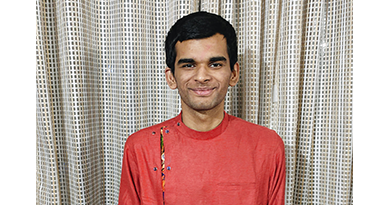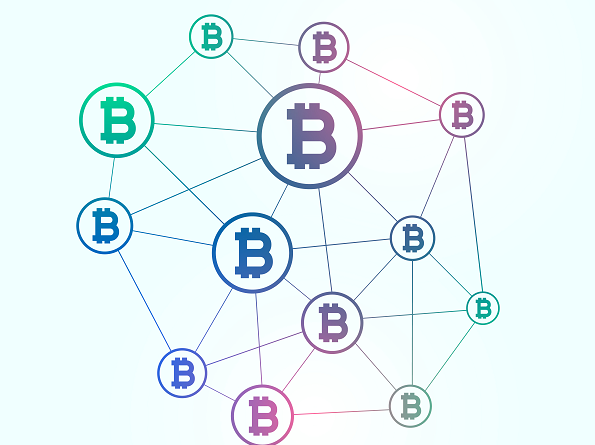What is Internet of Things – A complete guide

I come back home from the office, fighting the scorching heat; not even Glucon-D can bring life back to me. Gathering my almost lost energy, I switch on the TV to watch FIFA, only to discover that my brother has hidden the TV remote because I didn’t let him watch that movie the other day. Little does he know that gone are the times when I had to beg him for the remote; now, I can simply tap my smartphone and change channels! How? Thanks to IoT!
What is IoT?
To understand what is Internet of Things, let’s disseminate the term. Internet of Things comprises two words: internet and things. So what is internet? The internet is an infrastructure that allows billions of people to be connected together either physically or wirelessly. And what is a thing? Any object that has a sensor attached to it, transmitting data to the cloud for analysis is called a thing in terms of the Internet of Things.
Another term that gets thrown around a lot while talking about the Internet of Things and needs clarification here is a cloud. What is a cloud? In the early 1990s, ‘cloud’ was used as a metaphor for internet while in reality, it is a colloquial term that utilizes the concept of cloud computing. Went above your head? Well, let’s recall the definition of a cloud that we learnt in school – a dense cluster of water molecules that appear as one from a distance. Similarly, an IoT cloud is a dense cluster of computers working together such that they appear to be one giant computing resource. An example of a cloud service would be cloud storage such as Dropbox. Anything stored in a cloud is actually stored on internet servers rather than your device.
So coming back to what is meant by IoT – it is simply taking all the physical devices and places in the world, adding an ability to sense and communicate in them, and connecting them to the internet and to each other.
Wait, that’s it? That’s the technology Tony Stark uses to talk to Jarvis, operate his home with a remote, and open maps, scroll through data, and surf the internet with just the tap of a finger? Well, yes!
Enough with the pop culture references though, let’s take a look at some real-time applications of the Internet of Things.
1. Smart home – How would it feel if you could switch on your AC before reaching home and have a cold coffee waiting for you in the kitchen? Dream come true, right? In a smart home, which can be built easily with some home automation techniques, all the devices and appliances that use electricity are connected to each other and to a home network, and whenever you give a command by voice, remote, or your smartphone, they respond.
2. Wearables – Wearable devices are connected with IoT sensors and software which gather data about the users and pre-process this data to extract meaningful information. An Apple watch, for example, not only shows you time and date but also enables you to keep a track of your daily activities and health, take calls, listen to music, and much more.
3. Connected cars – In a connected car, the devices are connected to each other, the outside world, and to the internet. Connected cars are able to optimize their own operation and enhance the experience of the passengers using sensors and internet connectivity. Tesla cars are a perfect example of IoT; they give you information about traffic, find you a parking spot, and even open the garage shutter when you reach home.
Whoa! That sounds cool. But how does IoT work?
Before we delve into how IoT works, let’s take a look at the IoT components.
1. IoT sensors – Embedded sensors collect data from the environment in the form of temperature, pressure, sound, or motion and turn it into data. For instance, the GPS on your phone is a sensor that lets one know your location.
2. Connectivity – The IoT devices and sensors are connected to the cloud via satellite, WiFi, Bluetooth, or ethernet so that the data can be sent to and from the cloud.
3. Data processing – IoT cloud offers various tools to process and store an enormous amount of data in real time. It integrates billions of devices, sensors, protocols, etc. and provides predictive analysis. In simpler terms, the Internet of Things cloud system performs high-speed data analysis on devices to provide meaningful insights.
4. User interface – Once the system has produced meaningful information, it is sent to the user via an email, text, or a notification. The user interface also allows the user to send in an input or make adjustments in response to the received data. For instance, when you make a payment through Paytm, you receive an OTP on your phone which you subsequently enter in the application.
Now, let’s see how IoT works. Sophisticated sensors are embedded in devices and objects, known as things, each transmitting valuable data. These things are connected to an IoT platform by an IoT gateway, which acts as a bridge between two communication networks (sensors and internet). The Internet of Things gateway could either utilise an IP network like ethernet or a non-IP network like Bluetooth. The cloud integrates the data collected from various devices and applies data analytics to it in order to extract meaningful insights. These insights are then sent across respective applications. Pretty simple, isn’t it?
But why do we want to connect devices to the internet? I mean why IoT?
To give you an idea of how IoT can transform our ways of living, an internet-connected system monitors the crop fields with the help of sensors and intimates farmers about the field conditions, helping them make smarter decisions such as how much water and pesticides should be used. IoT also automates the irrigation system, thus lessening the work and improving the productivity of farmers.
Consider another situation – let’s say all our city trash cans have sensors attached to them that give information about the level of waste in the container. Now, the concerned authorities can send the collection vehicles only when needed. This would optimize the waste management process, improve the efficiency, and cut the fuel and energy cost, ensuring that the trash cans are emptied at the correct time.
You can watch this video on the world of Internet of Things to understand how beneficial IoT can be in optimizing our day-to-day activities.
Google says IoT is an in-demand skill, but I’m still skeptical about the future of IoT.
As per a NASSCOM report, IoT market in India is expected to reach $15Bn by 2020. Internet of Things offers an opportunity for businesses to turn data into insights, owing to which the industry has been witnessing the birth of numerous segments which were unheard of some time back. With IoT revolutionizing various industries such as healthcare, retail, housing, transport, security, and agriculture, the Indian market will see an exponential mushrooming of the IoT jobs. Some of the companies that are actively utilizing the power of Internet of Things are Intel, Volkswagen, IBM, MediaTek, and Apollo Hospitals. To know about the careers you can explore by learning IoT technology, go through this article on why should you learn IoT.
How to learn IoT?
Now, we might not need Lightsabers and Death Stars, but we do need Alexa. And I was wondering what if you could make your own Alexa or build your own smart home for that matter? How? I’ll tell you how! Take up an online training on IoT which includes an elaborate explanation of the meaning of IoT and its key concepts, followed by modules on how to build an IoT monitoring system and how to control devices over the internet. Check out Internshala’s Internet of Things course – a complete IoT tutorial for beginners – wherein you can gain extensive insights into IoT technology and work on various projects such as environment monitoring application, an internet-connected alert system, web-based temperature data logger, a temperature monitor that posts tweets automatically, and many more.
You’re just one step away from learning IoT and gaining an IoT certification. So, what are you still contemplating about? Take the leap and enroll in Internshala’s IoT course today and avail an additional discount of 10%.
Pic credits: clicksoftware.com



